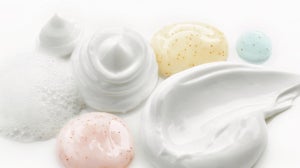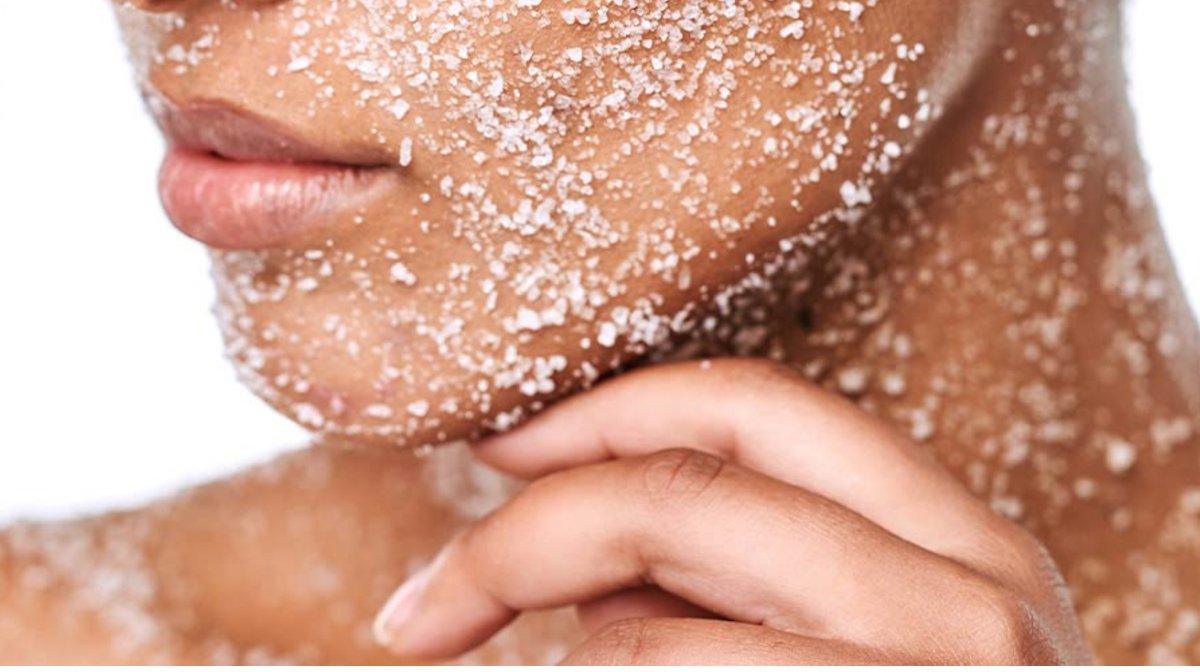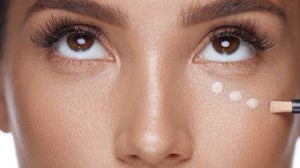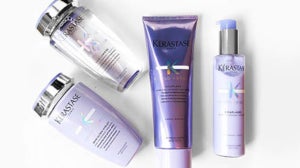
But with so many types of exfoliators available, how do you know which is the best option for your unique skin? Can a cream exfoliator infused with acids really do the same job as something that physically scrubs the skin’s surface? Are microbeads really all that bad? Spoiler alert: yep, they really are.
In today’s article, we’ll be giving you the lowdown on the main types of exfoliants, how to use them, and what makes them different from the rest. Here’s everything you ever wanted to know about exfoliating (and a few things you didn’t)...
The Main Types of Exfoliator
Largely, the most utilised ingredients in exfoliating products are either physical or molecular in nature. Microbeads and pumice are examples of physical exfoliators, while alpha hydroxy acids (AHAs) and beta hydroxy acids (BHAs) represent the molecular options.
The best option for your skin type will come down to a mixture of personal preference and your areas of concern. For example, sensitive skin types may find that physical exfoliators are too abrasive, while certain acids are gentle enough to be used by all.
1) Microbead Exfoliators
Let’s rip off the bandaid and get this one out of the way. Microbead exfoliators were all the rage in the early noughties. Those little plastic beads were great for ridding our faces and bodies of rough patches, but that’s not the only thing they were effective at destroying. Millions of these tiny beads were making their way from bathrooms all over the world into drains, waterways, and ultimately, the ocean.
Microplastics in the world’s oceans are a huge problem, and that’s without the addition of tiny plastic beads literally being poured down the drain. In 2016, the UK banned the use of microbeads in toiletries and cosmetics, and rightly so.
Luckily for us, as you’ll see in this article, there are lots of other fantastic options for exfoliation which don’t involve harmful ingredients.
2) Pumice Exfoliators
Ideal for those who enjoy a physical scrub and are looking for an alternative to microbeads, pumice has been used around the world for centuries. A light, porous rock formed when the foam of volcanic lava cools, pumice is a sustainable resource which needs minimal processing - this makes it a fantastic green option.
We already know that pumice is a great way to smooth heels, and it’s that same pumice which is used in cream exfoliators. Crushed into smaller particles, it physically helps with the turnover of skin cells.
Best Pumice Exfoliators:
A luxurious facial treatment, Omorovicza Refining Facial Polisher combines natural pumice with Hungarian Moor Mud to deeply cleanse and refine the skin. With added copper gluconate, it also helps to regulate sebum production making it a great option for oily and combination skin.
A cleanser and exfoliator in one, Jurlique Radiant Skin Foaming Cleanser uses super-fine pumice to brighten the skin, with natural ingredients adding hydration and a boost of antioxidants.
For the body, Cowshed Dual Action Body Scrub is a fantastic choice, combining a host of other exfoliating ingredients, including peach kernel, with nourishing aloe vera.
3) AHA Exfoliators
Alpha hydroxy acids, or AHAs, represent one of the biggest groups of exfoliators. They work by exfoliating the uppermost layer of skin, revealing brighter, more radiant skin beneath. Found as both peels and leave-on treatments, different alpha hydroxy acids have slightly different properties, and can vary their effects depending on their concentration.
The three main types are glycolic, lactic and citric acids:
- Glycolic acid is the most popular AHA and is found naturally in sugar cane. It can improve the skin’s firmness, reduce pigmentation, improve texture and even improve hydration. There are a wide range of glycolic acid exfoliators, but one of our favourites is the Murad Rapid Resurfacing Peel Wipes. With 10% glycolic acid, this extra-strength exfoliating treatment can be used 2-3 times per week for best results.
Read more about glycolic acid.
2. Lactic acid is naturally found in milk, although it’s more common for a synthetic version to be used in skincare. Slightly less potent than glycolic acid, lactic acid is a great option for sensitive skin as it’s mild nature makes it less likely to cause a reaction.
Many lactic acid exfoliators include other AHAs, but if you’re looking for a standalone product, try Elemis Dynamic Resurfacing Facial Wipes which use lactic acid and probiotics to improve the texture of the skin.
Read more about lactic acid.
3. Citric acid is another popular AHA which is found, unsurprisingly, in citrus fruits. While less effective than many other AHAs, it is often used in exfoliating cleansers. One in particular that we love is the REN Gentle Exfoliating Cleanser, which uses a combination of oils to cleanse and soothe.
4) BHA Exfoliators
If AHAs are the best all-rounder, BHA wins the title in the heavyweight category. Oil-soluble, beta hydroxy acids are able to penetrate deep into the pores, making them a great choice for those with oily or acne-prone skin. However, these same factors make BHAs unsuitable for dry or sensitive skin as they’re simply too harsh.
The main BHA which is used in skincare is salicylic acid.
Salicylic acid is a compound which was first derived from willow bark, another common ingredient in skincare. It is a powerful exfoliator, dissolving the debris which clogs pores and leads to acne. One of our favourite salicylic exfoliators is by French beauty titan Darphin. The Darphin Resurfacing Peel is a weekly treatment which can dramatically change the health and texture of your skin.
Read more about salicylic acid.
An Important Note On Exfoliators
No article that covers AHA and BHA exfoliants would be complete without mentioning how important sun protection is. Following exfoliation, your skin is particularly susceptible to sun damage, so it's incredibly important to wear a high SPF sunscreen before stepping foot outside.
Enjoy your summer skin, safely.

Related Articles








